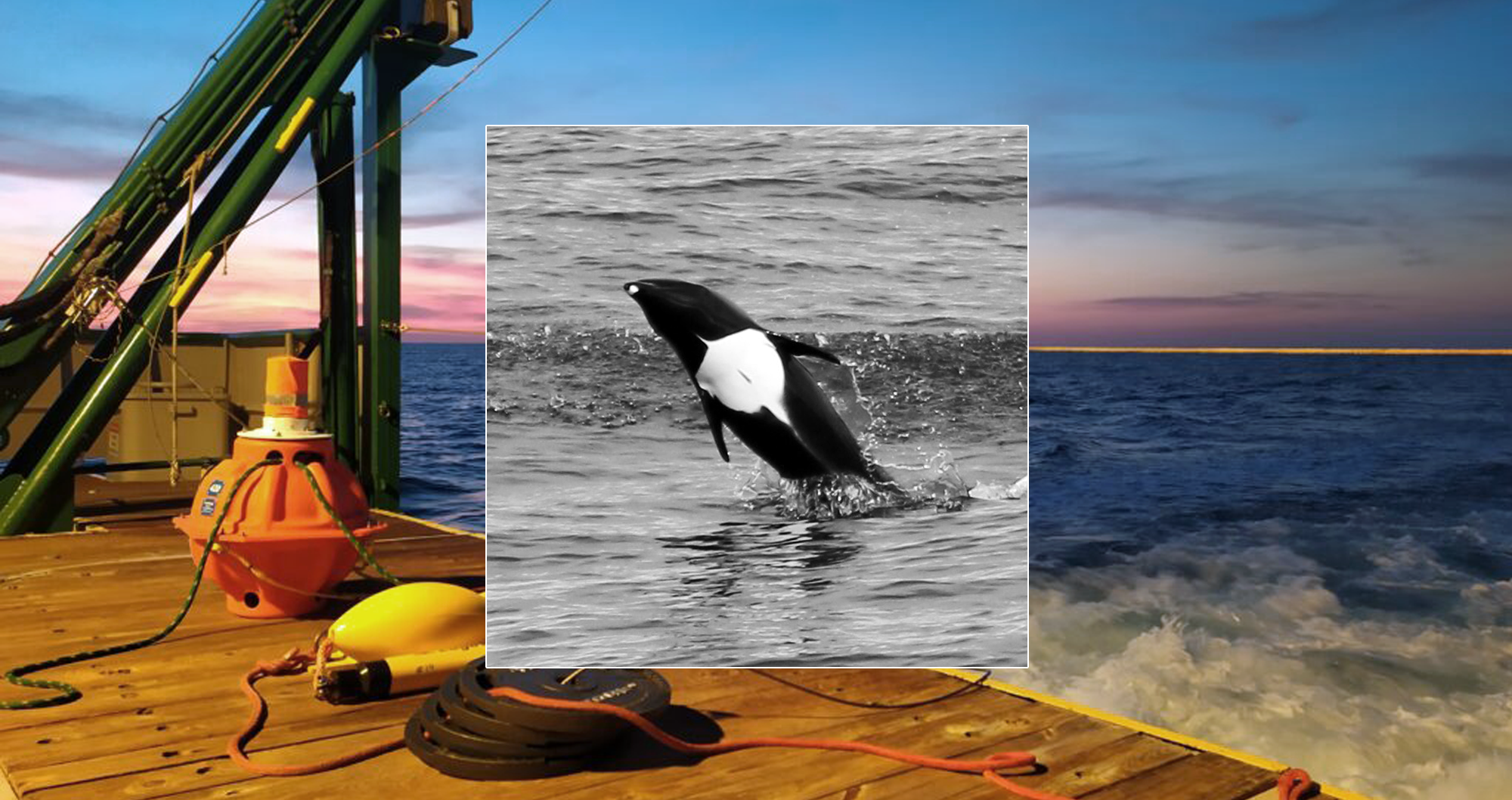Marine Mammal Biodiversity off the Oregon Coast

In partnership with Oregon State University’s Marine Mammal Institute and the HALO Project (Holistic Assessment of Living Marine Organisms), this work involves quarterly visual surveys and biannual acoustic device deployment and recovery along the Newport Hydrographic Line, a historically significant oceanographic transect with decades of physical data collection. We have three sites along the line, at 300m on the continental shelf, 700m on the slope, and our deepest deployment at 2,700m, which allows us to look at predator presence across depth as well. The goal is to gather three years of continuous biological data, especially on marine mammals, to complement the physical oceanographic data and analyze how top predators respond to climate-related phenomena like marine heatwaves and hypoxia.
We use our Rockhopper acoustic devices to detect marine mammal sounds, and our deep deployments allow us to focus in on deep-diving species such as sperm whales and various beaked whales, which dive to significant depths (1,500m to possibly 2,500 meters). We’re also working with data from the Ocean Observatories Initiative, funded by the NSF, which has oceanographic sensor arrays installed off the Oregon coast. We’re able to relate their in situ oceanographic data and our bioacoustic data to link together the physical and biological in the area.
Findings and goals:
- We’ve found that Sperm Whales are present year-round off the Oregon coast, challenging the existing understanding of their seasonal distribution.
- Build a demography to determine whether male or female Sperm Whales dominate specific regions at certain times based on their distinct acoustic signatures.
- Describe the presence of more cryptic beaked whales, including the elusive Hubbs’ (only seen alive twice in western science) and Stejneger’s beaked whales.
Researchers
Collaborators
Name